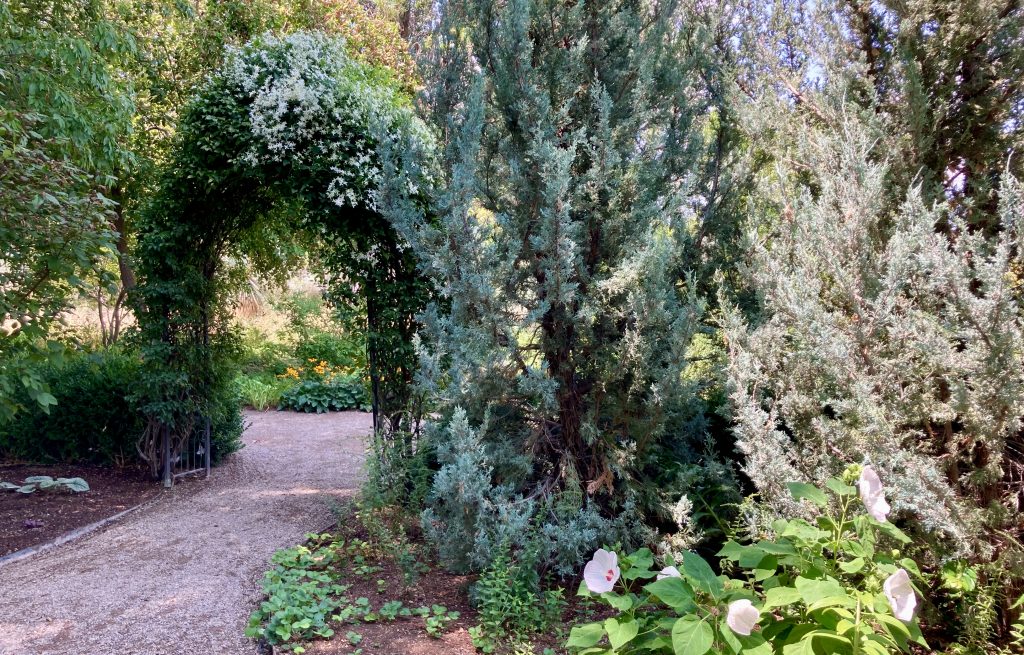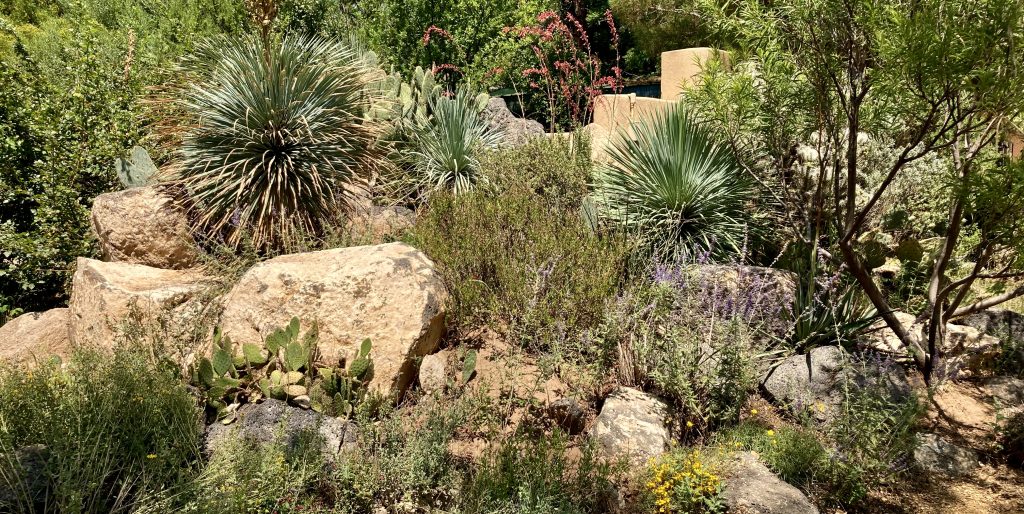Interview with Maria Thomas, curator of plants at the ABQ BioPark Botanic Gardens, as told to Sue Brown

When I think about being a person of place, I think about my commitment to making my place a better space in which to live. I grew up in northern New Mexico, and my roots are here in the Rio Grande valley and the surrounding mountains and mesas. When I left for six years, living in Oregon with its earthy-crunchy vibe, rocky beaches, tidepools, and (seemingly) endless tracts of old growth forests, there was a strong pull to stay there and make Oregon my long-term home. However, it remained important to me to eventually come back here where I felt a deeper connection, a deeper sense of place.
From growing up gardening with my grandparents, hiking in Northern New Mexico, cultivating medicinal plants in Oregon, and working as an archaeologist in the four corners area of the southwest, plants have always been a strong part of who I am. Working as the curator of plants at the Botanic Garden allows me to do many different things, but what I like most about my position is that I’m employed by the community. With everything I do there, I strive to create a better place for our community to visit and to live.
The work I do strengthening the native plant community and the conservation of our native endangered plants is also related to this purpose. I want kids growing up today and tomorrow to have the same opportunity I had to experience our wild local landscapes and discover the natural beauty of the state they live in. We have eight different biomes here in New Mexico which makes our state incredibly unique as far as plant diversity goes. It is something to take pride in and to protect as best we can. At the Botanic Garden, we work with botanists, watershed ecologists, and conservationists from local, state, and federal agencies who are dedicating their lives to protect our native environment, scouring the state for endangered native plants, and collecting seed that we are saving in seed banks. Unfortunately, statewide there are not enough resources allocated to this effort. What work is done is often dependent on grant-funding and other non-constant programs that require an incredible amount of volunteer time to make any sort of progress. In an ideal world, there would be greater recognition of the important work of these people and state-wide action plans would be implemented to give them the long-term support they need to accomplish this incredibly important work.

Sustainability is also a major issue that we emphasize through many program themes at the BioPark. Drought impacts everything we do and care about. We all want to reduce our water use since it is a limited precious resource, but it is important to understand that you can have a beautiful yard using native and desert-adapted plants that promote pollinator and wildlife habitat and still use very little water. Many local landscapes use massive amounts of crushed gravel with very few plants. This gets heated up by the sun and then continues to heat up the city, which then increases evaporation of the little rainfall we manage to get each summer. Hotter landscapes equal stressed out plants, stressed out wildlife, and stressed out people as well! We need a different story to engage new stakeholders, otherwise we just continue preaching to the choir and still end up with vast subdivisions of sterile, inhospitable “zero-scape.” With this in mind, we know we have to generate interest at the grassroots level, which is something we are now implementing at Tingley Beach.
Continue reading
